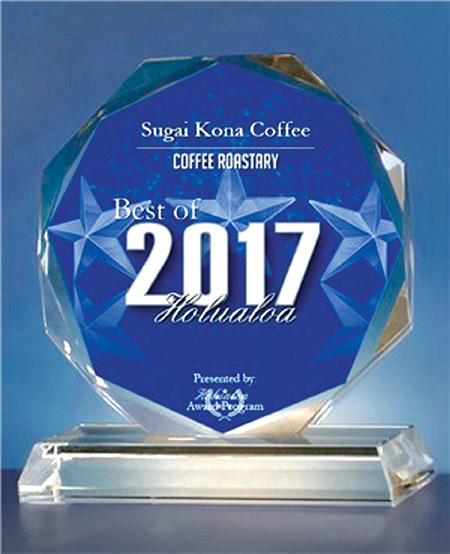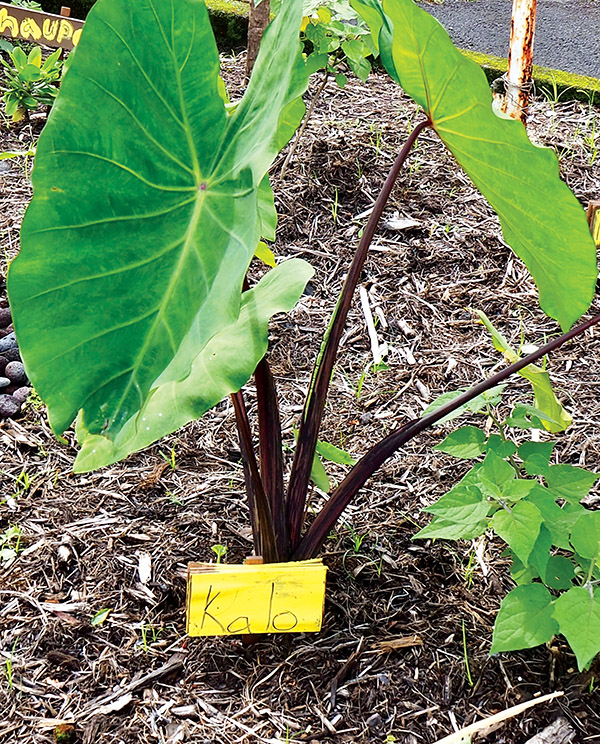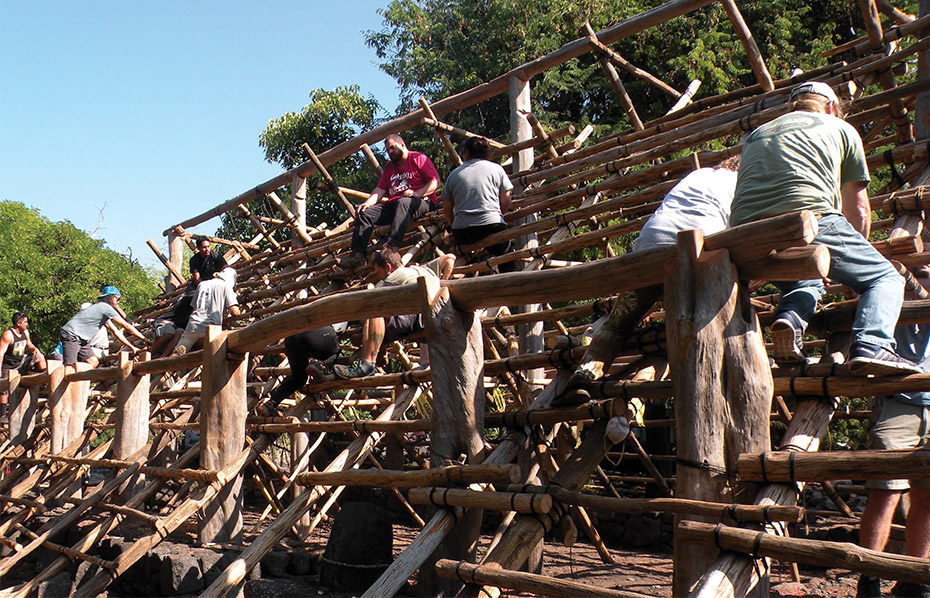
Hale o Ho‘oponopono: Perpetuating the Cultural Legacy of Hōnaunau

By Gayle Kaleilehua Greco
Driving down the single lane road towards the Hōnaunau boat ramp, there is a quietness that envelops you, a glimpse of the ocean, and a curiosity of what happened on this land in the early days outside the walls of Pu‘uhonua o Hōnaunau. As you make the turn at the corner of Hōnaunau Bay, the restored Hale o Ho‘oponopono stands tall and proud.
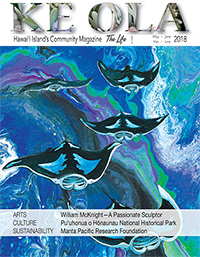
Completed in July of 2017, the restoration of the traditional native Hawaiian hale was born as a labor of love and kuleana (responsibility) of the Keōua Hōnaunau Canoe Club and the Hōnaunau community. Rafael Ramirez, current president of the canoe club humbly says, “It was the most incredible project of my life. I’ve been involved in building, remodeling, but nothing like this. This was different; this was like going through a window in time.”
The original Hale o Ho‘oponopono (house of making things right, bringing things into balance, healing) was built in the same Hōnaunau location in the early 1970s by a team of Kanaka Maoli (Native Hawaiians). The hale was school for children and teenagers of South Kona who had a challenging time within the public school system.
A forerunner to the Hawaiian immersion schools of today, Kamehameha Schools provided a place where the displaced students of the community could learn in a way that suited their disposition and educational needs. Under the direction of the kumu (teachers) along with cultural practitioners and kūpuna (elders) of the community, the children began to learn traditional as well as everyday life practices.
The original hale was a pu‘uhonua (safe place) that provided many activities and opportunities for the young Hawaiians who grew up there during this time. In 1984 the school closed, and for 30 years after, the structure gave way to the elements of the environment, making it uninhabitable.

A Canoe Club Gives Life to the Hale
Established in 1974, the Keōua Hōnaunau Canoe Club was formed by students and paddlers who worked on the original Hale o Ho‘oponopono. The canoe club’s mission is to perpetuate the ancient art and culture of Hawaiian outrigger canoe paddling as traditionally practiced on historic Hōnaunau Bay. The club members are also dedicated to promoting awareness of Hawaiian culture and responsible stewardship and management of our ahupua‘a (district) resources.
Rafael shares, “We were all paddlers and have taken care of this land for years, clearing it by hand, getting rid of the invasive species and planting native plants … By 1993, we began to take the original hale apart for safety … [with the vision] that someday we’re going to rebuild this hale.”
With only the original foundation, the ‘ili‘ili (waterworn stone) floor, some salvaged wood and upright ‘ōhi‘a poles left standing, the restoration of the hale was a daunting task, however the idea was kept alive in conversation for more than 20 years by the members of the canoe club and community.
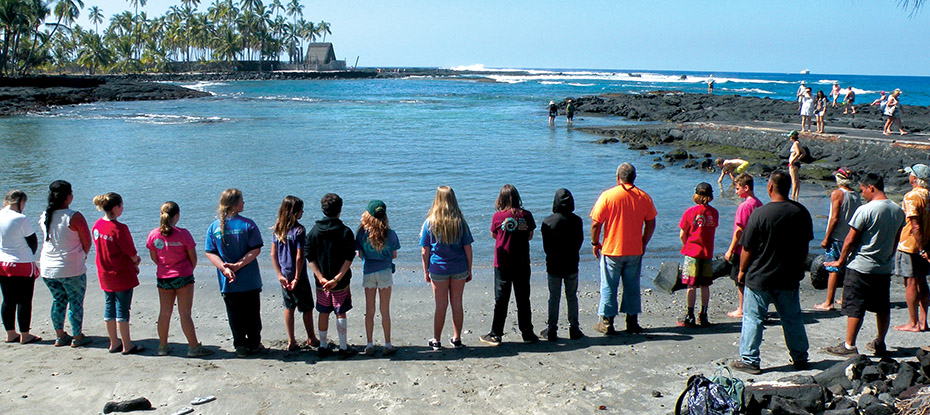
In 2014, a canoe club member applied for a grant to fund the restoration of this significant structure that contributed so much as a former Hawaiian school and had the potential of being of equal or greater value in the future.
After submitting the grant application to the Administration for Native Americans (ANA) and being turned down three times, the Hale o Ho‘oponopono grant was approved in 2015. Rafael said, “After each time of being turned down, they [ANA] would tell us why the grant wasn’t approved. Is it achievable? How are you going to do this? Who is going to do it? We learned from this each time.” The canoe club members worked with 14 community project partner organizations to create what would be the final proposal to the ANA.
The grant, as submitted and approved, had two components: the restoration of Hale o Ho‘oponopono as a hale hālāwai (meeting place) to include a training program and career path for haumana (interns) and an ahupua‘a boundary marker system for the project area. The development of a website for education about the area was another goal. As the project began, additional funding and donations came in from donors who had a heartfelt kuleana to the mission at hand. One of them, Uncle Jeff Anderson, donated all the ‘ōhi‘a for the project.
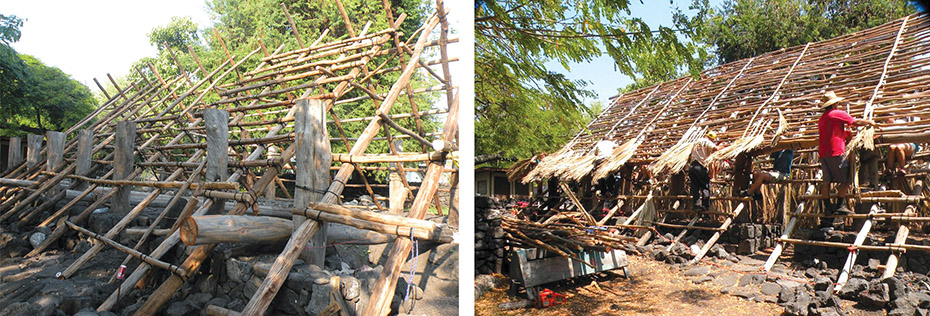
Restoration of Hale o Ho‘oponopono
With funding in place, it was time to gather the workers and a leader to develop the process of what would be a two-year restoration project. Walter Wong (Uncle Waltah) of Waimea, one of the most experienced hale builders in the state, was called upon to lead the project in Hōnaunau. Walter was taught hale building by Kumu Francis “Palani” Sinenci of Maui and they have worked together on 42 hale projects in the past 10 years.
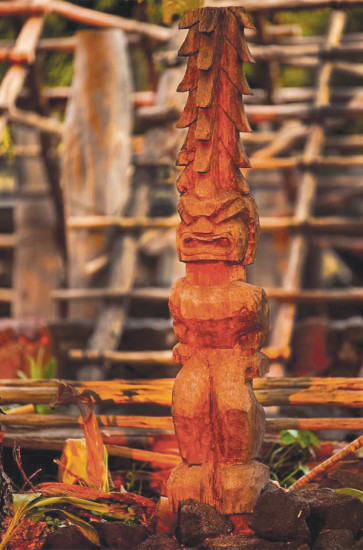
The overall building plan was developed using Hawai‘i County’s building code for traditional and indigenous structures, a standard that was proposed by Kumu Francis and adopted in 2000 by the Department of Public Works and Environmental Management.
The restoration development took form with a small team of core hale builders, their haumana, and members of the community and school students who participated in eight monthly workshops led by Uncle Waltah and the building team.
Uncle Waltah speaks about Joe Tassill, one of the kūpuna from the original hale, at the blessing of the grounds. “After the formal protocols, we walked onto the site and Uncle Joe was on the platform. He grabbed my hand, squeezed my hand and said, ‘You are the hale builder’ and I said, ‘Yes, I am the hale builder Uncle Joe’. He asked me to bend down and he put his hands on my shoulders and said, ‘You feel this squeeze? That’s the kuleana that I’m passing on from me to you’.” Uncle Waltah continued, “I felt the weight of responsibility come down on my shoulders. And Uncle Joe said, ‘You promise me that this hale will be restored?’ and I said, ‘I promise you Uncle Joe’.”
At the beginning of each day, the core team and their haumana met with Uncle Waltah to pule (pray), talk about the work of the day, and along with Uncle Joe’s words, they set out to accomplish their goals. Five days a week, for two years, this was the protocol for the restoration team.
As part of the overall mission, the restoration project involved the community in the building of the hale through a series of workshops. In the beginning, the teaching was as basic as clearing the property and pulling weeds, to sorting rocks for walls and bundling loulu palm leaves for thatching.
Uncle Waltah offered his acknowledgement of Rafael’s humble determination, “He’s very concerned that someone is groomed to mālama (care for) the hale after him.” Uncle Waltah continued, “It was a big plus for me to have that dictionary (Rafael) on the side of me. Uncle Rafael was there for everything from before and now today too.” The traditional, historical knowledge combined with the hale building standards would make the modern-day structure stronger than before.
During the monthly workshops, Uncle Waltah would work with the core team to plan the activity and task that could be learned by the aunties, uncles, and all who came to the workshops. “Whatever they were learning made them hungry to come back again. The project was completed because of the many hands working. It was done with so much aloha,” says Uncle Waltah.
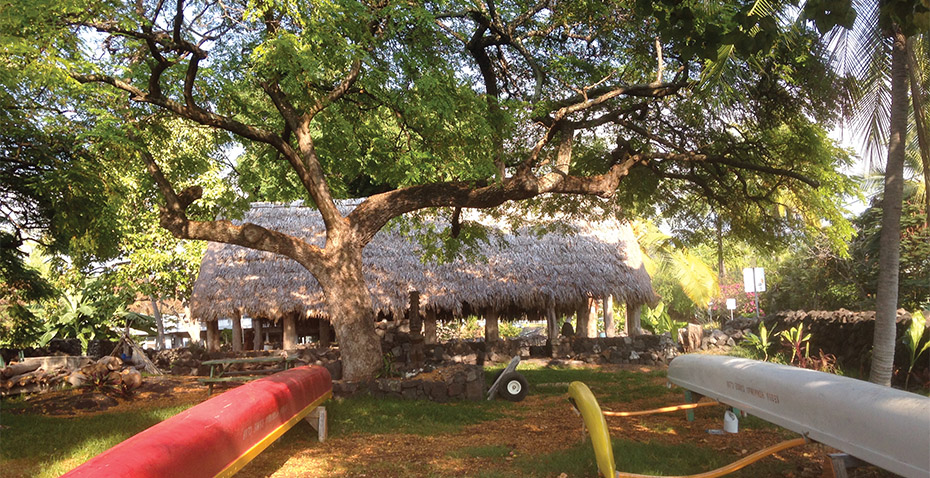
Coming Full Circle
On July 30, 2017, Puna Kihoi of Waimea officiated the blessing of Hale o Ho‘oponopono. Puna was a teacher at Hale o Ho‘oponopono in the 1980s. Randal Kahele, a haumana on the core hale building team, was one of Puna’s students at the original school. A circle completed, their reunion at the hale blessing was one of many emotional reconnections.
Kumu Francis Palani, master builder, was present along with Uncle Waltah, Rafael, the hale building team, volunteers, members and ‘ohana (family) of the Keōua Hōnaunau Canoe Club, and residents of the Hōnaunau community. A special tribute was held for Uncle Joe Tassill who passed away the day the last pole was put in place.
Ahupua‘a Markers
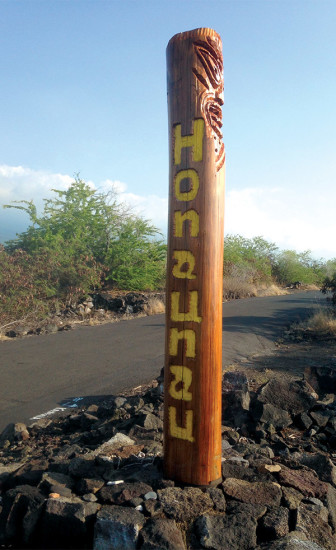
The second objective of the ANA grant was to identify the ahupua‘a of Hōnaunau by creating an educational boundary marker system for the area. “We’ve lost the place names and our language from lack of use,” says Rafael.
A research team headed by Leinani Navas-Loa, a cultural practitioner with deep Hōnaunau roots, identified the various ahupua‘a between Hōnaunau and Nāpo‘opo‘o. This project was modeled after similar work done by the Ko‘olaupoko Hawaiian Civic Club in Kaneohe, O‘ahu who mentored and sponsored the Keōua Hōnaunau Canoe Club members to accomplish their mission.
The outcome of the study was that four ahupua‘a markers were placed on historic Keala o Keawe Road (Highway 160), identifying the ahupua‘a of Hōnaunau, Ke‘ei Nui, Ke‘ei Iki and Kahauloa. A fifth as yet unmarked ahupua‘a, Kalamawai‘awa‘awa, begins at the entrance to Nāpo‘opo‘o.
The carving and setting of the markers became a family event. Uncle Clarence Medeiros had carved the ki‘i at the original Hale o Ho‘oponopono (two of which are still standing at the hale). Lolana Medeiros, one of Clarence’s sons, volunteered to carve the new ahupua‘a markers for Keala o Keawe Road. Rafael’s son Camilo, who owns Hawaiian Rockscaping, volunteered his time to build the rock ahu (mound/platform) for the markers.
When the hale was blessed in the summer of 2017, the finished carved markers were stacked in the hale to also receive the blessing. In October 2017, the markers were installed at their permanent homes along Highway 160. Rafael says, “We would love to see this [the markers] spread around the island to educate people and mark the history of the land.”
A Source of Education
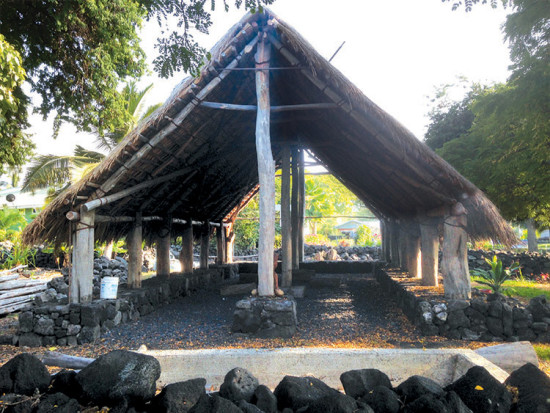
Another component of the grant was to develop a website as a central source of information for Hōnaunau and Kona Hema (South Kona). The website, named Hōnaunau Ola Mau Loa: Hōnaunau: Forever Healthy and Life-Giving, currently provides information and history about Hale o Ho‘oponopono, nā ahupua‘a, Hōnaunau, and Ke‘ei.
The goal is to include information for visitors about how to protect the coral, sea life, and other marine resources, and also to share the oral history of the community about the kūpuna and people who have made a difference in the community.
The entire Hale o Ho‘oponopono project has far-reaching benefits for the community and will serve to strengthen the cultural landscape of Hōnaunau Bay in remembrance of the ancestors. ❖
For more information: honaunau.org
